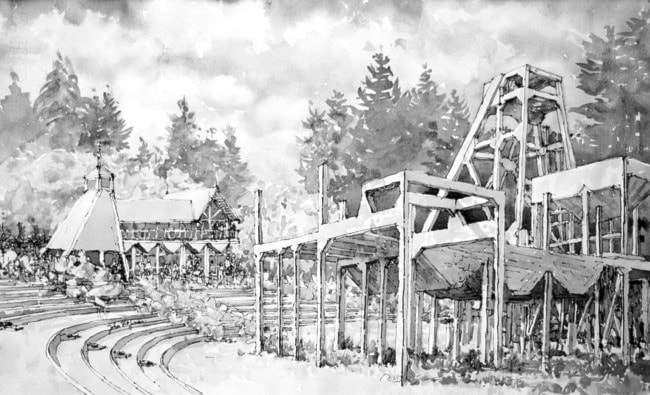If I wanted to learn more about Nanaimo’s coal-mining history, where should I go?
Like the coal mines it is built upon, Nanaimo has, until now, remained in the dark when it comes to sharing our history with visitors, says Tom Paterson, a local historian.
While coal mining set the foundation for the city from the mid-1800s to the 1950s, there has been precious little information visitors can quickly glean to learn more about the Harbour City’s historic roots.
“This has been Nanaimo’s glaring omission, in my mind,” said Paterson. “The city’s coal mining history has been allowed to be forgotten. Pardon the pun, but it’s a black hole.”
For years, the city’s only nod to its coal mining past was a small plaque mounted on a chunk of coal at Front and Church streets, and a bowl full of coal on the desk in the mayor’s office.
Many believe Nanaimo’s history was suppressed because of the tragic toll coal mining took on its early residents – at least 600 men were killed over the years at 50 mining sites throughout the area, including one explosion that claimed the lives of 150 men in 1887 at the No. 1 Esplanade Mine – and many of Nanaimo’s first families chose to forget.
But as time heals all wounds, coal mining is slowly creeping back into the city’s consciousness.
Over time memorials, kiosks, parks and displays are appearing, as the community slowly begins to tell its story.
Twice a year, Paterson takes guests on his Black Track Tour in South Wellington.
Beginning at the historic Morden Colliery’s head frame, the tour visits several mine sites, and points out slack piles and depressions in the land where, over time, shafts have begun to cave in.
Friends of Morden Mine (www.mordenmine.com), a community group organized to preserve the aging head frame, have been working actively in the community to raise money for the project.
On Oct. 4, 2009, the Extension Heritage Committee opened the Extension Miners Community Park, a tribute not only to the miners but also to the contribution the mines made in founding the community.
Perhaps a visitor’s best visual resource is the award-winning mine display at Nanaimo Museum. The mine replica, built by movie industry professionals, has the look and feel of an underground shaft, complete with coal carts, tools and an interactive coal mine and map. Guests can ask for a brass tag before they enter, and at then end of the exhibit they punch in a code to hear the story of an actual coal miner, the role he played, and his fate.
More recently, a kiosk and memorial garden was established at the bottom of Milton Street, near the site of the fateful No. 1 Esplanade Mine, to commemorate those lost in 1887, and a kiosk has also been established at the trailhead at Diver Lake to remember the village of Wellington and its role in the mining industry.
Mining has also crept into Nanaimo’s social fabric in other ways. Juno-nominated singer-songwriter and Nanaimo resident David Gogo captured the feel of mining, and its tragic past, in his song She’s Breakin’ Through.
That title is apt, as Nanaimo’s coal mining industry and the stories it allows, despite its history, is indeed beginning to break through.
reporter2@nanaimobulletin.com
